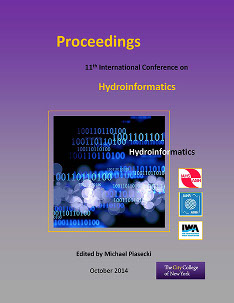Document Type
Presentation
Publication Date
8-1-2014
Abstract
Snowmelt modeling was attempted in this study using Snowmelt Runoff Model to simulate streamflow in Tamak Lata Catchment located in the Indian Himalayas. The daily snow cover data was generated using the depletion curves prepared using snow cover information obtained from MODIS remote sensing images during May 2009 to August 2012. Discharge, temperature and rainfall data observed at Tamak Lata during May 2009 to August 2012 were used for calibration and validation of the model. The characteristics of snow cover in the basin shows that the accumulation of snow at higher altitude starts from the second week of October and the snowline comes down to lower elevation up to lower zone. By the end of March, the snowmelt begins and the snowline recedes up to elevation of 5200 m by the end of the melt season. Till the start of the melt season, more than 75% of the basin area is covered with snow and it reduces to approximately 25% at the end of the melt season. The calibration of the model in terms of stream flow has indicated that the low flows and the peaks in the stream flow are well produced. Statistical evaluation of the model performance during calibration period, in the form of efficiency varied from 0.74 to 0.90 with an average value of 0.812 indicating a good model fit. The model performance during validation period was also found to be very good with efficiency with 0.8. The modeling of the snowmelt shows that snow and glacier runoff contribution in Tamak Lata catchment were 63.81% on annual basis and 65.34%, 52.64%, 73.4% for monsoon, post monsoon and, winter and pre-monsoon seasons.



Comments
Session R22, Development and Application of River Flows